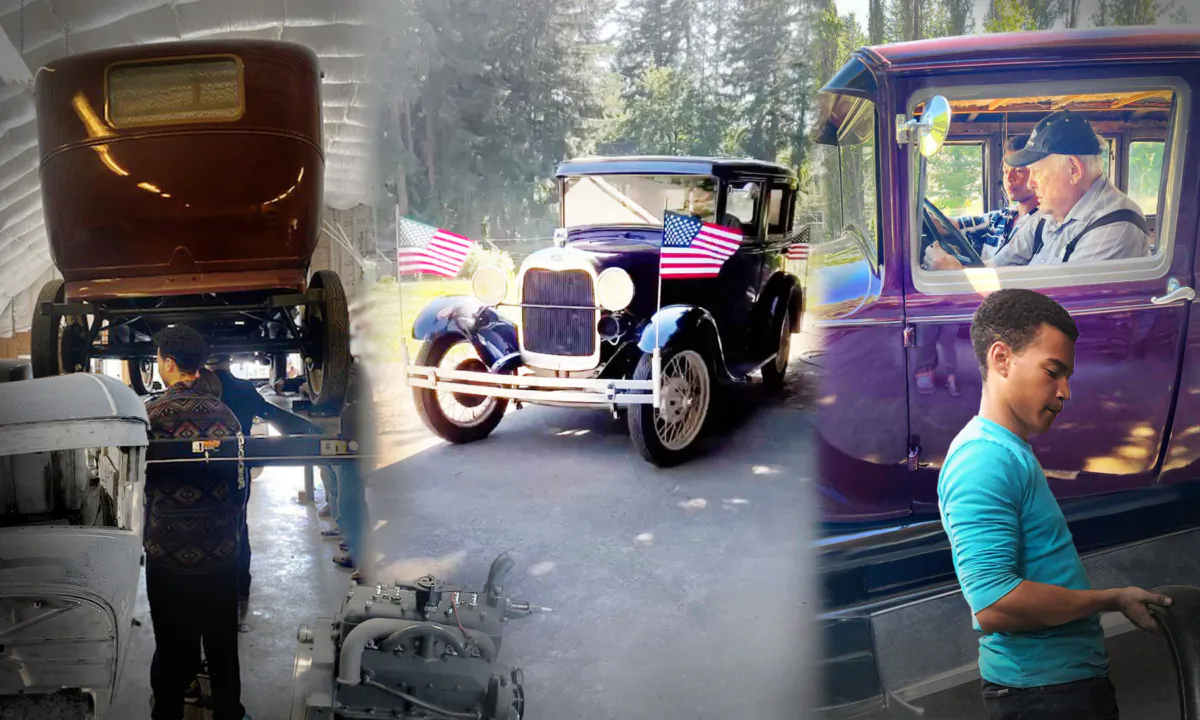
It was a friendship driven by old-time automobiles.
And it started with 91-year-old George Sage’s appointment to see a nurse.
Thus starts a story too good not to read…follow this link to get the whole story…

It was a friendship driven by old-time automobiles.
And it started with 91-year-old George Sage’s appointment to see a nurse.
Thus starts a story too good not to read…follow this link to get the whole story…

Are you looking for that one-of-a-kind car that turns heads and steals the show? Do you want the roar of a classic muscle car or the sleek lines of an exotic supercar in your garage? Well, you’ve come to the right place. In this guide, we’ll cover everything you need to know to purchase your dream car and become the envy of your friends.
Before starting your search, it’s important to do your homework. What are the differences between exotic and classic cars? What makes and models are available? What’s the average cost of ownership? Once you’ve established what you want, you can start looking for the perfect car.

There are many dealerships out there selling exotic and classic cars, but not all of them are reputable. Look for dealers with a good reputation, strong online reviews, and a long history of sourcing and selling high-quality vehicles. Make sure they have experience selling the type of car you’re interested in and are knowledgeable about the market trends.
Never buy a car without a test drive. If possible, test drive the car in a variety of driving conditions, including city and highway driving. Check for any strange noises or vibrations, and make sure the car feels comfortable. Take note of how you feel driving the car and ask yourself if it’s really what you want.

Before finalizing the sale, it’s essential to have an independent, third-party inspection performed on the car. This will ensure there are no hidden issues that may be expensive to repair down the line. A pre-purchase inspection should include a thorough check of the engine, transmission, brakes, suspension, and overall condition of the car. (Full disclosure: Our Sponsor is a mobile Car Inspection Service.)

Once you’ve found the perfect car and completed all the necessary inspections, it’s time to negotiate the price. Do your research ahead of time and be prepared to walk away if the deal doesn’t meet your expectations. Remember, sometimes the seller may be willing to negotiate if you’re serious about purchasing the car.
Buying an exotic or classic car can be a thrilling experience, but also comes with a lot of responsibility. By researching your options, finding a reputable dealer, scheduling a test drive, getting a pre-purchase inspection, and negotiating the price, you’ll be well on your way to owning the car of your dreams. Happy driving!

Once in awhile we struggle with modern design. There is beauty in utility but there is a time, at least there once was a time, when beauty is elevated to top priority in design. Enter this classic Buick Streamliner in pristine condition, restored by Dave Crouse for the 2010 Concours d’Elegance.
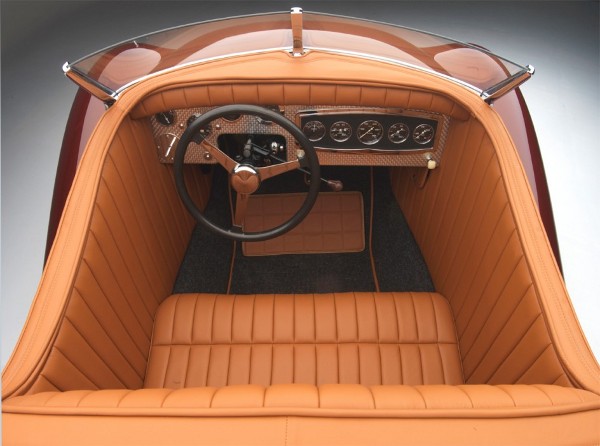
Built with an aluminum body around a steel chassis, this work of moving art took two years to create. Good luck ever catching site of something like this on the road.
For more articles of interest and pictures of crazy and beautiful cars follow us on Facebook.
Maybe it’s just the boats tail. Check out this blue number that really leans into the boat tail.


OP-ED by Paul Wimsett and A.R. Bunch
The Project, or low buck car, is that vehicle in your driveway or garage that’s falling apart even as you try to get it running. It may need certain bits which are impossible to find, it may be lacking the right paperwork to go on the road. Or, maybe its lacking some bits which ARE possible to find, you just haven’t got round to them yet.
Maybe you have a project house, or a house full of projects really; it’s just something that consumes all your time and money. So it’s a good idea before you commit to buying the project car you work out how much it’s going to cost to restore—then add 25%.
So what kind of project do you want? Something vintage; something sporty; something a bit more obscure? There are so many choices, which is why you need to plan.
Well any car, although a search online refers to Mustangs, Chevrolets, Buicks and old Fords. These may take a great deal of work but it seems that you’ll find the parts easier than more obscure car makes.
 One special type of project, called a rat rod, imitates the hot rods of the 40s, 50s and 60s. The idea is to create your own style using previous designs often leaving it rustic, or just rusty. The goal is to have a car which runs for a bit cheaper than a vintage restored 1940s hot rod, (in truth not much cheaper).
One special type of project, called a rat rod, imitates the hot rods of the 40s, 50s and 60s. The idea is to create your own style using previous designs often leaving it rustic, or just rusty. The goal is to have a car which runs for a bit cheaper than a vintage restored 1940s hot rod, (in truth not much cheaper).
Whether you chose to restore your project immediately or not, you’re probably in need of some off-road storage. Have you got somewhere permanent? It’s no good just storing at a friend’s garage because sooner or later they will want the space back.
Here’s a crazy mistake made way too often—is the garage too small for the car? Yes, it does sound obvious, and yes many a homebrew wrencher has moved their project across town only to find it won’t fit! The more time you spend making arrangements for you project the less time you have to work on your project.
When it comes to picking up the car you’ll need a trailer and (if you’ve thought about this carefully you’ve probably already realized this) another car. Could you lease a car and a trailer? That’s possible, but again it eats into your budget.
The next part of it is time. You’ll need time to work on fixing the car true, but you’ll even need time to plan when things go wrong or circumstances change. You may need to say goodbye to your friends for a while. And how long really do want to spend fixing the car? After all, you might only be doing it to impress your circle of friends.
Speaking of which, have you told your spouse what you’re up to. How many hours will this project take per week? Is that the same number in your spouse’s brain? Don’t lose a partner over a car. Well maybe, but don’t lose it over not communicating about a car. There, that’s more like it.

When you do finally fix the car will it work on normal gas or does it need premium? If the latter there’s another debit you need to account for. Lots of people make vehicles they can’t really afford to show off. Do you need special insurance, or special licence plates?
How safe will the car be on the road? Remember, it’s unlikely you will have all the proper paperwork about the car. Even if you do fix some problems will the car be as safe as a regular car? Check your local DMV’s website or talk to other restoration specialists to learn the local process for getting your car declared roadworthy.
It’s definitely a commitment and not for the faint-hearted. If you stick it out to the end you may have the car you always dreamed of for the price of sweat equity. But if you pick your project because it’s a good deal and you haven’t yet thought up how you’re going to use it, well, you could end up with a black hole that absorbs your money and time.
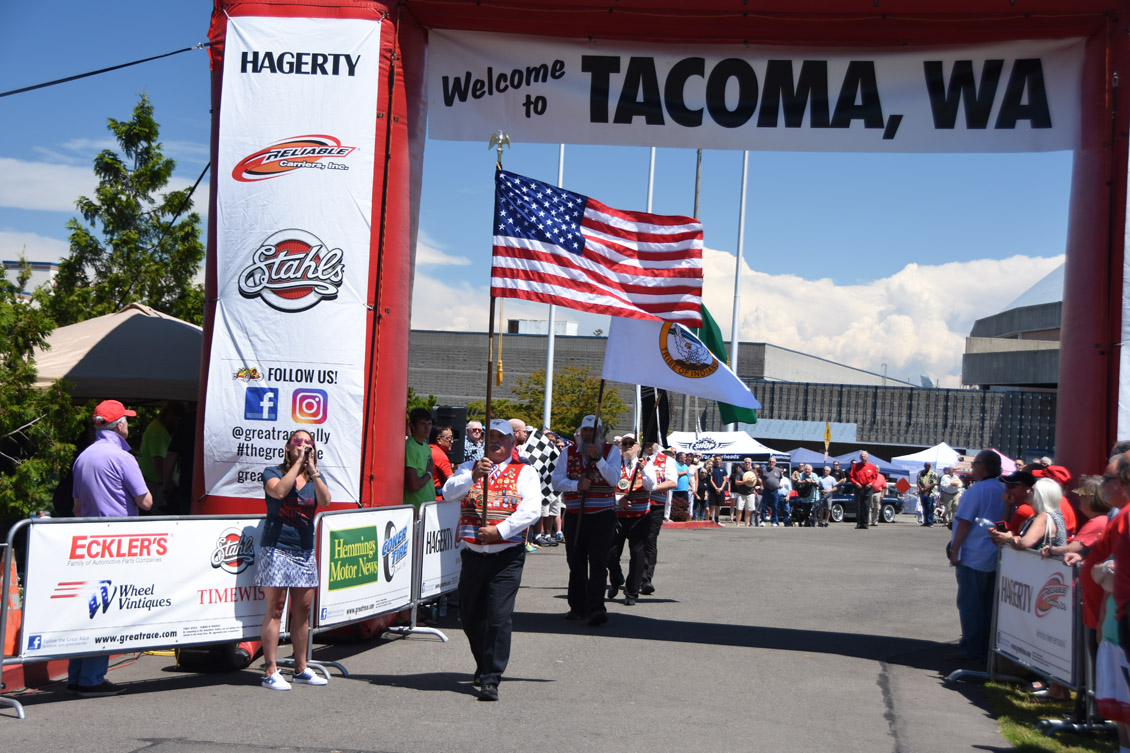
“Wow, what a crazy adventure. Nine days and approximately 2,300 miles later, we’re in Tacoma, Washington for one of the most awesome Great Race finishes in quite some time. The LeMay – America’s Car Museum offered the perfect venue for our event, and the local car community came out in full force to support the event. The racers had a very challenging final stage of the Great Race, with a multitude of speed changes and maneuvers, leading to the culmination of the 2019 Hemmings Motor News Great Race presented by Hagerty…. the crowd would welcome each car across the finish line and then reconvene for the announcement of the winners.
 We went class by class, and the crowd went wild when announcer Jason White would reveal the class winners. X Cup kicked off the show, as Scott Culp and the Murfreesboro, Tennessee team took top honors in their 1953 Pontiac Chieftain. Then it was the Sportsman team of Neil Myercough and Shanna Chatraw taking fifth place overall and winning their division. The Expert class was highly contested, as always, and it was Olivia and Genna Gentry getting the job done in their new 1932 Ford five-window coupe rally car.
We went class by class, and the crowd went wild when announcer Jason White would reveal the class winners. X Cup kicked off the show, as Scott Culp and the Murfreesboro, Tennessee team took top honors in their 1953 Pontiac Chieftain. Then it was the Sportsman team of Neil Myercough and Shanna Chatraw taking fifth place overall and winning their division. The Expert class was highly contested, as always, and it was Olivia and Genna Gentry getting the job done in their new 1932 Ford five-window coupe rally car.
 Finally, we announced the winner of the Grand Champion, which was the team of Howard and Doug Sharp from Fairport, New York. Their 1916 Hudson was bullet proof all week long, and the Sharps were diligent with their strategy of repeatability…do the same thing every day and never look back. Take a look at some of our photos from the finish line festivities, as well as photos from this morning’s route, our adventure at the drag strip and our Awards Banquet.”
Finally, we announced the winner of the Grand Champion, which was the team of Howard and Doug Sharp from Fairport, New York. Their 1916 Hudson was bullet proof all week long, and the Sharps were diligent with their strategy of repeatability…do the same thing every day and never look back. Take a look at some of our photos from the finish line festivities, as well as photos from this morning’s route, our adventure at the drag strip and our Awards Banquet.”
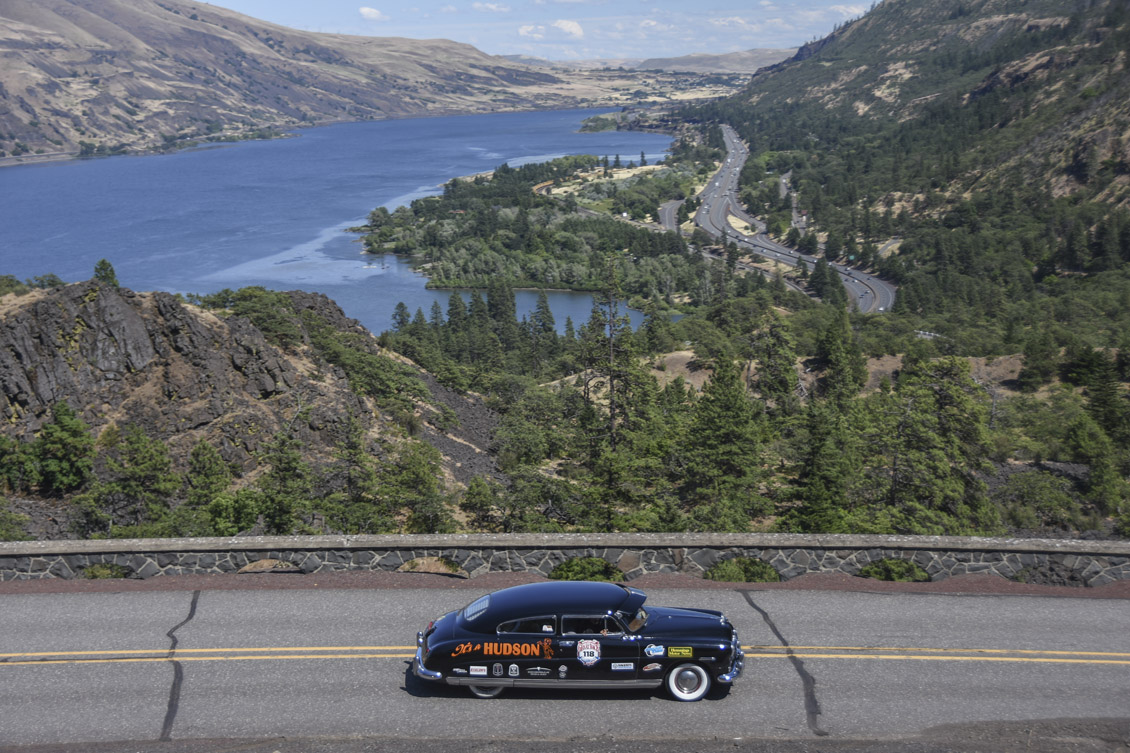
For those who missed a post from us yesterday, we didn’t post because we were out covering the Great Race! Instead we’re posting today!
Welcome to our coverage of the Great Race…
We had a fantastic day at the Vancouver, Washington stop on the Great Race. If you’re in Astoria, Oregon right now stop looking at the computer and get yourself down to the Maritime Museum and check it out live for yourself.
By lunch today the cars should be stopping to eat on Commerce Avenue, Longview, WA. Then tonight’s layover will be in Spanaway, WA. at the LeMay Family Collection about 5:15 PM.
The Final Finish Line is LeMay – America’s Car Museum in Tacoma, WA. @ 1:30 PM Sunday.
 For more details on the rest of the race stops click this link.
For more details on the rest of the race stops click this link.
If you want more details on all the cars in the race, click this link.
Here’s some photos from the event here in Vancouver, Washington where we watch the lead cars come in so far. But first lets give a big thanks to Ron Wade of the Western Antique Aeroplane & Automobile Museum (WAAAM) for being a great host. We not only saw some great cars, but we had great conversations with owners, listened to live music, and ate great food from local food trucks. The Coffee Via food truck is one of the great food trucks available here on a regular basis, and we’re excited to come back do a deeper dive on the museum and the food trucks.
 The Friday began in Warm Springs, OR near Bend when the route took the racers to Hood River, OR for lunch. After a bite, racers were treated to the scenic highway 30 through “The Columbia River Gorge” and some of the most beautiful scenery in the world.
The Friday began in Warm Springs, OR near Bend when the route took the racers to Hood River, OR for lunch. After a bite, racers were treated to the scenic highway 30 through “The Columbia River Gorge” and some of the most beautiful scenery in the world.
As racers reached the finish line at WAAAM in Vancouver, each car, driver, and navigator was announced and trivia was told. The day was hot and the crowd was excited. Excitement and congeniality blended to bring an atmosphere unique to car culture.
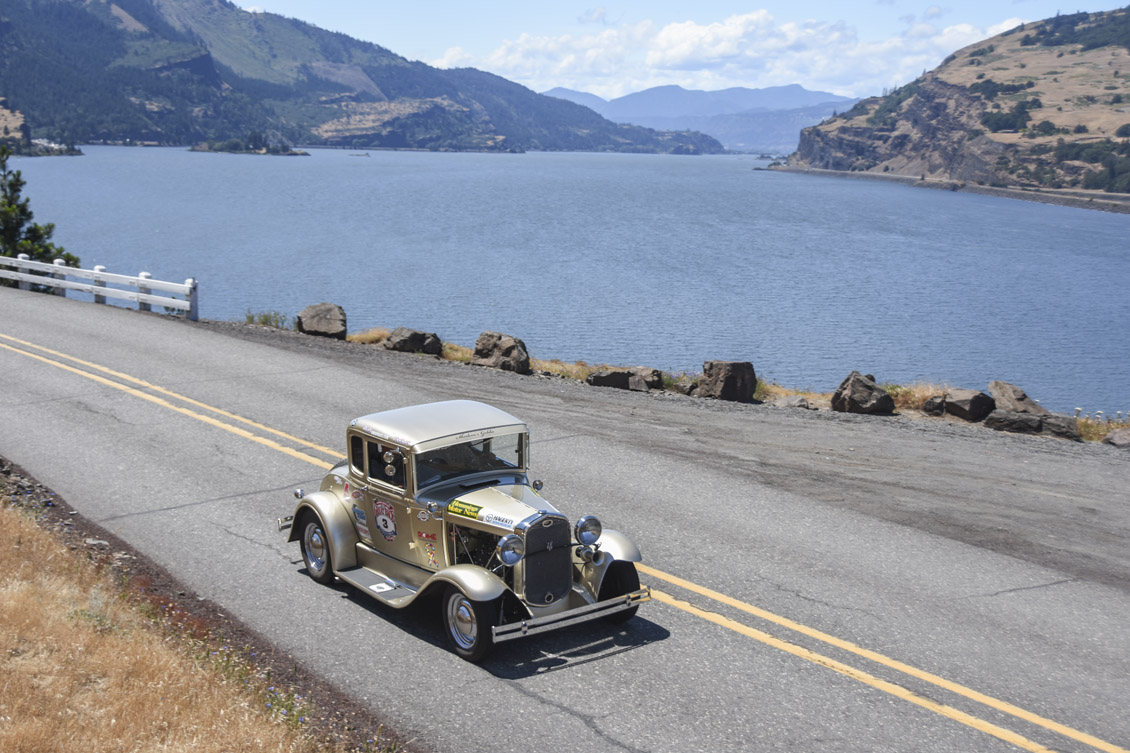


Please enjoy tons more photos on the Kicker Facebook Page.
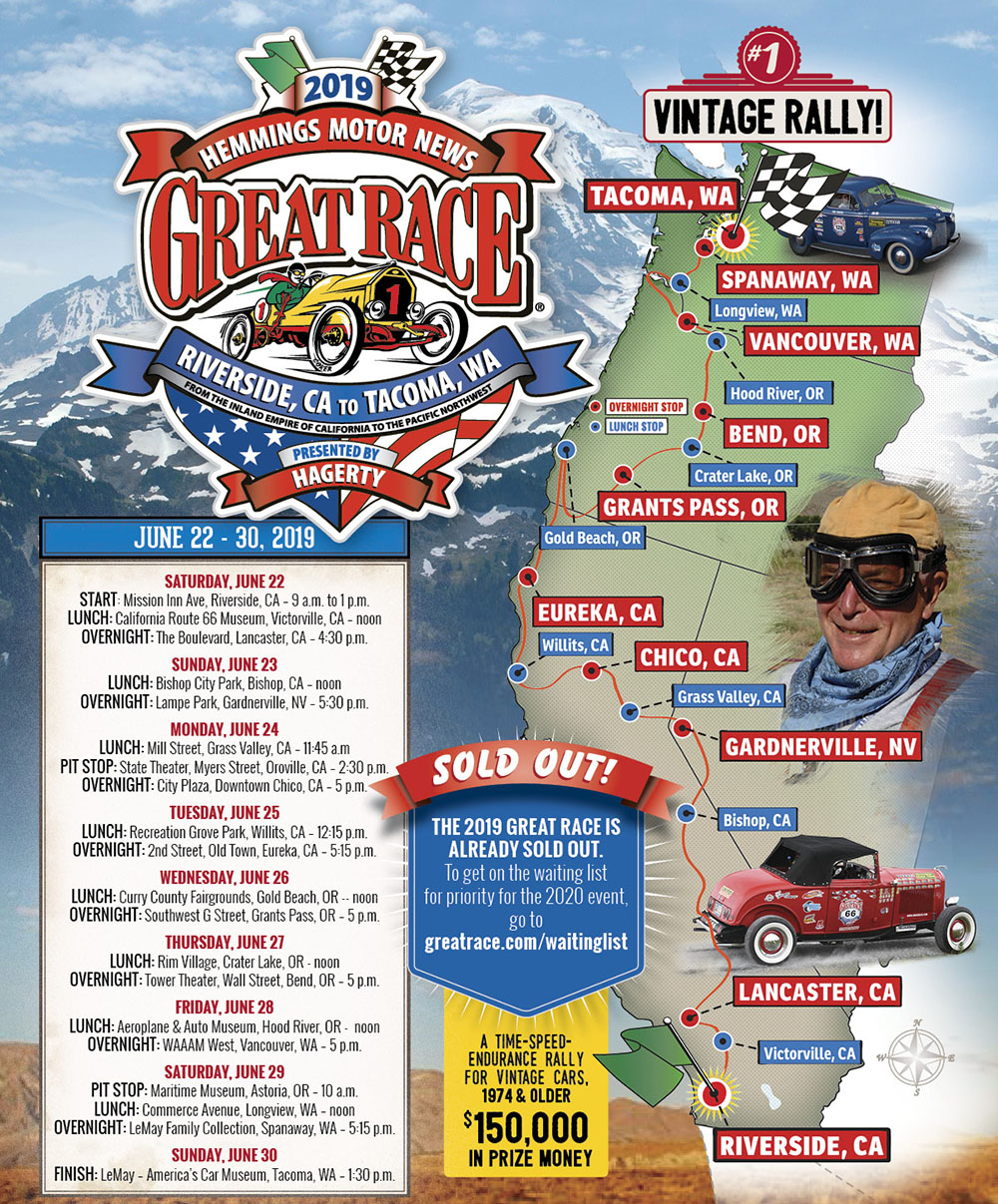
The Columbian Newspaper here in Vancouver, WA is covering the great race we mentioned on Monday. You know we’ll be there this Friday. It’s going to be fun, I hope some of you come down and join us. (If you don’t live local, just google your local car shows and check one out.)
Activities start at 10 am technically, when the Museum opens, but don’t expect to see any cars at the finish line until about 5 PM. In the mean time there is a cruise-in at 2 PM and eventually live music by King Brothers.
The finish line for the overnight layover will be WAAAM West Cars by Ron Wade at 1015 N.E. 78th St., Vancouver, WA.
The Great Race began 36 years ago and is a Time/Speed/Distance Rally. It began in Riverside, CA. this year and will end in Tacoma, WA. Each stop is free.
For an Update on Day Four Progress here’s a link.
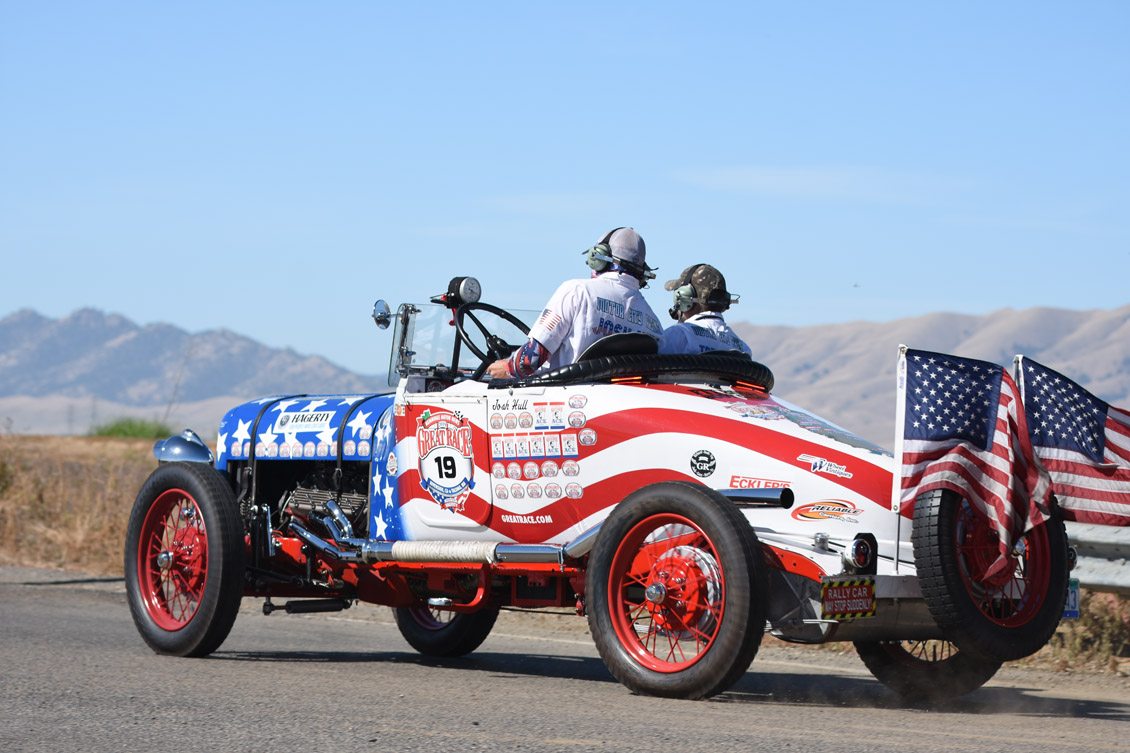

Welcome to the first installment of our coverage of the Great Race.
According to the race organizers official blog:
“Teams and cars from Japan, England, Australia, Canada and every corner of the United States will converge in Riverside in mid-June with vintage automobiles dating back as far as 1916.”
This will be the first year that the race will start and finish on the west coast. It began today in Riverside, CA and ends Saturday June 30 in Tacoma, WA.
Here’s a link to the full route.
Link to route
The 9-day, 2,300-mile adventure will bring 120 of the world’s finest antique automobiles to 18 cities in California, Nevada, Oregon and Washington. More than $150,000 will be awarded to top finishers in multiple divisions.
“The event was started in 1983 by Tom McRae and it takes its name from the 1965 movie, The Great Race, which starred Tony Curtis, Jack Lemmon, Natalie Wood and Peter Falk. The movie is a comedy based on the real life 1908 automobile race from New York to Paris. In 2004, Tony Curtis was the guest of the Great Race and rode in his car from the movie, the Leslie Special.”
“Cars built in 1974 and earlier are eligible, with most entries having been manufactured before World War II. In the 2017 Great Race a 1932 Ford won the event from Florida to northern Michigan. The 2019 winners will again receive $50,000 of the $150,000 total purse.”
“Over the decades, the Great Race has stopped in hundreds of cities big and small, from tiny Austin, Nevada to New York City.”
Every stop along the race is free to the public and you can be sure when it rolls through Vancouver, WA. This Friday the kicker blog will be there to cover the event.


When looking for auto body services that are niche—such as classic car restoration—you don’t want to trust your baby to just anyone. You (and your ride) deserve a specialist. Every auto body shop has preferred projects, and it’s often reflected in the passion of the owner. Don’t trust a classic car to the skills of a shop that specializes in new cars, has never performed a complex restoration, or that doesn’t have the connections to get the right vintage parts.
Easily one of the toughest parts of restoring a classic car is simply finding the goods. Your car doesn’t even need to be particularly rare in order to make this a challenge. For example, restoring an 80s Ford Bronco can be a nightmare when it comes to finding something as seemingly simple as a seatbelt replacement. Scouring sites like BroncoGraveyard is enough to drive an owner mad, a quality shop has insider information to get that part like new for a surprisingly low cost.
Restoration is a big and dirty job. Are you sure you have the right professionals in your corner?

Securing the Value of a Classic Car
Revamping a classic car isn’t like trying out a new recipe. It’s not so easy to “start over” if you (or your body shop) messes up. This is a one-shot deal. It’s your job to secure the value and protection of a classic car by choosing a body shop that specializes in vintage cars and—preferably—has worked on a very similar model before. Ask for before and after photos, the experience of each technician who will be working on the car, check out their repair gallery, and honest assessments of results you can expect. At a renowned shop, the owners are happy to provide this information because they’re proud of the work.

Surprisingly, one sign of a good repair shop is when they say a certain result won’t be perfect. Sometimes no amount of money is going to get you flawless results. However, you should expect very, very good results that are often perfect to the untrained eye. If a shop says they can’t do something, they should be able to refer you to someone else nearby that can.
Showing Off the Goods
Once your baby is primped, pampered and primed, it’s time to take it on the road. For many classic car owners, one of the biggest thrills is participating in car shows—and there are plenty of them, get-togethers and cruise nights in spades. Coming up in September is Soda Row Cruise Night in Jordan, the Les Schwab Car Show in Oden, and the Golden Living Car Show in Taylorsville to name just a few.
 There’s a space and community for every make, model, and era. Nothing compares to a leisurely desert cruise or meeting up with others who share your love for all things classic. For your oldie but goodie, depend on a local classic repair shop who will keep you, and your machine, looking good.
There’s a space and community for every make, model, and era. Nothing compares to a leisurely desert cruise or meeting up with others who share your love for all things classic. For your oldie but goodie, depend on a local classic repair shop who will keep you, and your machine, looking good.
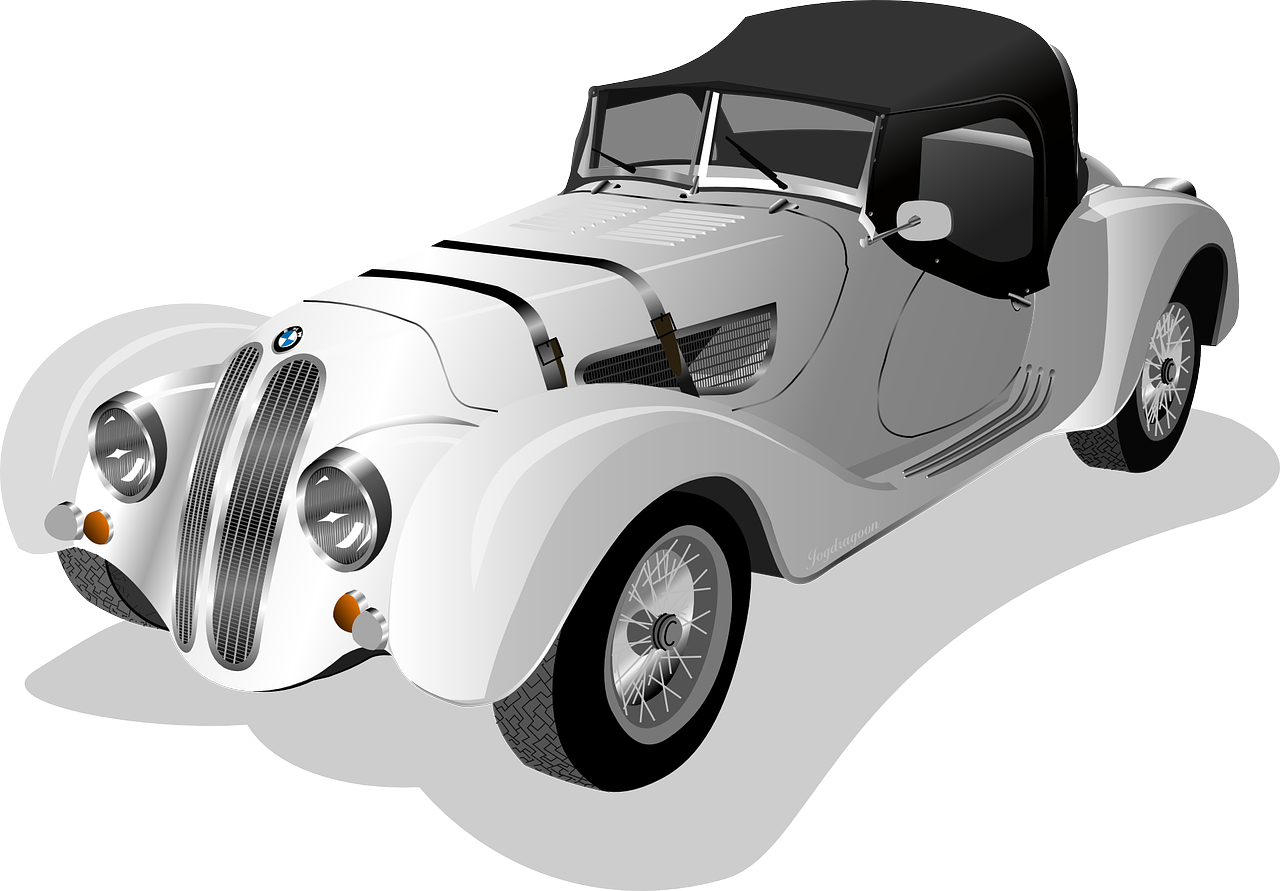 The Evolution:
The Evolution: Soon after the Brass Car Era, (pre 1930) when any bicycle maker could try his hand at creating a horseless carriage, the US entered what we commonly call, the Vintage Car Era. What spurred the vintage car era in a more serious direction was the relatively short period between 1919 and 1930, which coincides with the First World War when the true potential of motorized vehicles and improved roadways became clear to citizens and government alike.
Soon after the Brass Car Era, (pre 1930) when any bicycle maker could try his hand at creating a horseless carriage, the US entered what we commonly call, the Vintage Car Era. What spurred the vintage car era in a more serious direction was the relatively short period between 1919 and 1930, which coincides with the First World War when the true potential of motorized vehicles and improved roadways became clear to citizens and government alike.
Thus began the vintage car era, 1930ish to 1948, which coincides with the Second World War. So when you are looking at what appears to be a vintage car it might be a Pre-War, War or Post-War car—in reference to World War II.
When you think of a vintage car you think of a well-defined automobile, its headlamps stick out, it has quite a small radiator and beaded wheels. What most people don’t realize is that many vintage cars had radios. But with a few exceptions, it was all about being as comfortable as possible.
Some vintage cars evolved into brands we’d recognize today and others died out with time.
 In 1921 Citroen created the B2, which had a top speed of 45mph. This 3-speed car had a spring suspension and shock absorbers.
In 1921 Citroen created the B2, which had a top speed of 45mph. This 3-speed car had a spring suspension and shock absorbers.
Fast forward to the 1955 2CV there is something familiar in the shape, in the headlights for instance, (though it seems to be taking inspiration from the Mini a bit, as well as the VW Beetle). The 55 2CV has four-wheel drive and a fourth gear. It is even suitable for off-road traveling. The main difference, though it would be hard to pick a specific feature, is that it no longer looks like a “boneshaker.”
But the Deux Chevaux (2CV) remained stripped down compared to other cars of its era. Citroen was ahead of its time in predicting what the average car buyer would value, and while the seats were barely more than metal and canvas, the car could carry 2 farmers and a basket of eggs across a plowed field without breaking anything. Sure the windows didn’t roll down, but it went 100 km on 3 liters of fuel, and that kept it popular for over 55 years.
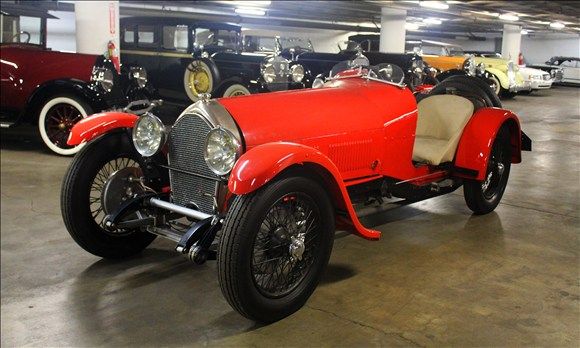 A vintage car design that wouldn’t survive, the 1927 Pedroso. It might seem like a car from the future with ignition timing straight from the dash, the seats close to the ground and so on.
A vintage car design that wouldn’t survive, the 1927 Pedroso. It might seem like a car from the future with ignition timing straight from the dash, the seats close to the ground and so on.
The trouble is that when you create a car for racing, parts become expensive very quickly. You also want something unique, not something that can be easily manufactured. Ultimately, the reason for Pedroso’s failure is that it remained a shed-built car; it didn’t go into mass production, so it’s vintage but actually so rare as to not be popular with collectors.
It seems that as cars evolved they have become much more structural and possibly less defined. Terminology has also changed; in the U.K. we speak of “bodywork” rather than “chassis.” (In the US we call it a “frame” & “body” if it’s a truck or old car, or unibody as the case may be.) For more on car-component terms see our post from Monday.
Headlamps and wheel-wells moved from distinct items affixed to the body/frame closer and closer to the body itself and then incorporated completely inside the main body of the vehicle.
The partial convertible, or Coupe DeVille, with its open-top front seat and enclosed rear has given way to cars being only convertible (hard or soft top) or not convertible at all.
 The regal “Estate Car,” gave way to the station wagon, which lost it’s spot to the much-maligned minivan, which lost it’s market to the citified version of an SUV.
The regal “Estate Car,” gave way to the station wagon, which lost it’s spot to the much-maligned minivan, which lost it’s market to the citified version of an SUV.
What might surprise us the most when viewing old photos is the clothes drivers and passengers wore in different eras. Brass era drivers wore what might be thought of as “flying suits.” Vintage era drivers wore their Sunday best. Nowadays they just wear their usual clothes.
Cars as a category have become less special as they became integrated with our everyday life, even though we actually became more dependent on them.
What period of car development are we in now? Well since the 1980s all cars have just been described as modern. But you can divide modern cars up into 20th Century modern and early 21st modern if you so wished.
This doesn’t mean that a 20th Century modern car is fundamentally different from an early 21st Century car. Some things may have changed; the transmission, for instance, the number of speeds and so on. But we are no longer in the time of strong evolution as far the automobile is concerned.